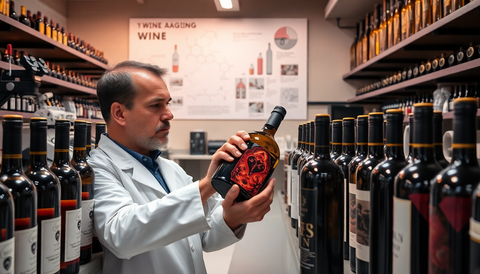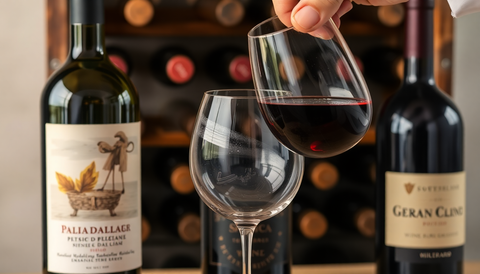Wine is a complex and nuanced beverage, with a rich vocabulary that can sometimes feel intimidating to the uninitiated. From tannins to terroir, the language of wine can seem like a secret code, leaving many wine enthusiasts feeling lost in translation.
However, understanding the key terms and concepts that shape the world of wine is essential for truly appreciating and enjoying this age-old elixir. In this comprehensive guide, we'll demystify 20 essential wine terms, empowering you to navigate the world of wine with confidence and discover new favorites along the way.
Tannins
Tannins are naturally occurring compounds found in the skins, seeds, and stems of grapes. These astringent, drying compounds play a crucial role in the structure and mouthfeel of a wine. Tannins can lend a wine a sense of bitterness or dryness, and they also contribute to a wine's ability to age gracefully over time.
Acidity
Acidity is a measure of a wine's tartness or crispness. High-acid wines, such as Sauvignon Blanc or Riesling, have a refreshing, mouth-watering quality, while low-acid wines, like Merlot or Cabernet Sauvignon, tend to feel softer and more velvety on the palate. Acidity is essential for balancing a wine's sweetness and providing a clean, refreshing finish.
Body
The body of a wine refers to its weight and mouthfeel. Light-bodied wines, like Pinot Grigio, have a delicate, almost watery texture, while full-bodied wines, such as Cabernet Sauvignon, have a rich, viscous quality that coats the mouth. The body of a wine is influenced by factors like alcohol content, tannin levels, and the concentration of the grape juice.
Bouquet
The bouquet of a wine refers to the complex array of aromas that develop as a wine ages. These aromas can range from floral and fruity to earthy and spicy, and they are the result of chemical reactions that occur during the winemaking process and over time in the bottle. A wine's bouquet is an important factor in its overall flavor profile and can provide clues about its quality and aging potential.
Terroir
Terroir is a French term that encompasses the unique environmental factors that influence the character of a wine, including soil, climate, and topography. The terroir of a particular region can impart distinct flavors, aromas, and characteristics to the wines produced there, making each wine a reflection of its place of origin.
Vintage
The vintage of a wine refers to the year in which the grapes were harvested. Vintage can have a significant impact on a wine's flavor, as factors like weather conditions and growing seasons can vary greatly from year to year, affecting the quality and character of the grapes.
Decanting
Decanting is the process of pouring a wine from its bottle into a separate vessel, often a decanter. This allows the wine to "breathe" and can help soften tannins, release aromas, and improve the overall flavor profile of the wine. Decanting is particularly beneficial for older, more complex red wines.
Oxidation
Oxidation is a natural process that occurs when a wine is exposed to air, causing it to gradually lose its fresh, vibrant character and develop more mature, nuanced flavors. While controlled oxidation can be desirable in certain wines, excessive exposure to air can lead to a wine becoming "flat" or "stale."
Malolactic Fermentation
Malolactic fermentation is a secondary fermentation process that occurs in some wines, particularly red wines and certain white wines like Chardonnay. During this process, tart malic acid is converted into softer, creamier lactic acid, resulting in a smoother, more rounded mouthfeel.
Residual Sugar
Residual sugar refers to the amount of unfermented sugar that remains in a wine after the fermentation process. Wines with higher levels of residual sugar, such as Riesling or Moscato, will taste sweeter, while drier wines have lower levels of residual sugar.
Legs
The "legs" of a wine are the thin, slow-moving streams that form on the inside of a glass after swirling the wine. The thickness and speed of the legs can provide clues about the wine's alcohol content and viscosity, with fuller-bodied, higher-alcohol wines typically displaying more pronounced legs.
Finish
The finish of a wine refers to the lingering taste and sensation that remains in the mouth after swallowing. A long, smooth finish is often a sign of a well-balanced, high-quality wine, while a short or abrupt finish may indicate an imbalance or a less complex wine.
Corked
A "corked" wine is one that has been tainted by a compound called TCA (2,4,6-trichloroanisole), which can impart a musty, damp, or moldy aroma and flavor to the wine. Corked wines are considered flawed and undrinkable.
Sediment
Sediment is the natural byproduct of aging that can accumulate in the bottom of a wine bottle, particularly in older, unfiltered red wines. While sediment is harmless, it can contribute a gritty or bitter taste if not properly decanted or poured.
Sulfites
Sulfites are a naturally occurring compound that is also added to many wines as a preservative. While sulfites can cause allergic reactions in some individuals, they play a crucial role in maintaining a wine's freshness and preventing spoilage.
Vintage Variation
Vintage variation refers to the differences in a wine's character and quality from one year to the next, due to factors like weather, growing conditions, and the winemaker's decisions. Understanding vintage variation can help wine enthusiasts make informed choices about which years to seek out or avoid.
Appellation
An appellation is a legally defined and protected geographical region where a wine is produced. Appellation systems, such as those used in France (e.g., Bordeaux, Burgundy) and other parts of the world, help ensure the quality and authenticity of a wine based on its place of origin.
Barrel Aging
Barrel aging is the process of allowing a wine to mature in oak barrels, which can impart flavors of vanilla, spice, and toasted oak. The duration and type of oak used in barrel aging can significantly influence a wine's character and complexity.
Lees
Lees are the spent yeast cells and other sediment that settle to the bottom of a wine barrel or tank during fermentation and aging. Allowing a wine to age on its lees can contribute to a richer, creamier mouthfeel and more complex flavors.
Cuvée
A cuvée is a blend of different grape varieties, vineyard sites, or vintages that a winemaker has carefully selected and combined to create a unique and harmonious wine. Cuvées are common in Champagne and other sparkling wines, as well as in some still wines.
Terroir
Terroir is a concept that is deeply rooted in the world of wine, and it is one of the most important factors in determining a wine's character and quality. By understanding the language of wine and the key terms that shape this fascinating industry, you can unlock a deeper appreciation for the art of winemaking and the unique flavors that each region and vintage has to offer.
Whether you're a seasoned wine connoisseur or just beginning your journey into the world of wine, mastering these 20 essential terms will empower you to explore the vast and diverse world of wine with confidence and enthusiasm. So, raise a glass and let the language of wine guide you on a flavorful adventure.




Comments (0)
There are no comments for this article. Be the first one to leave a message!